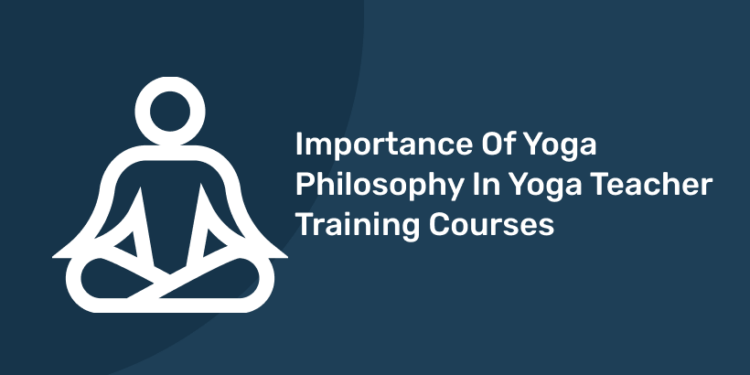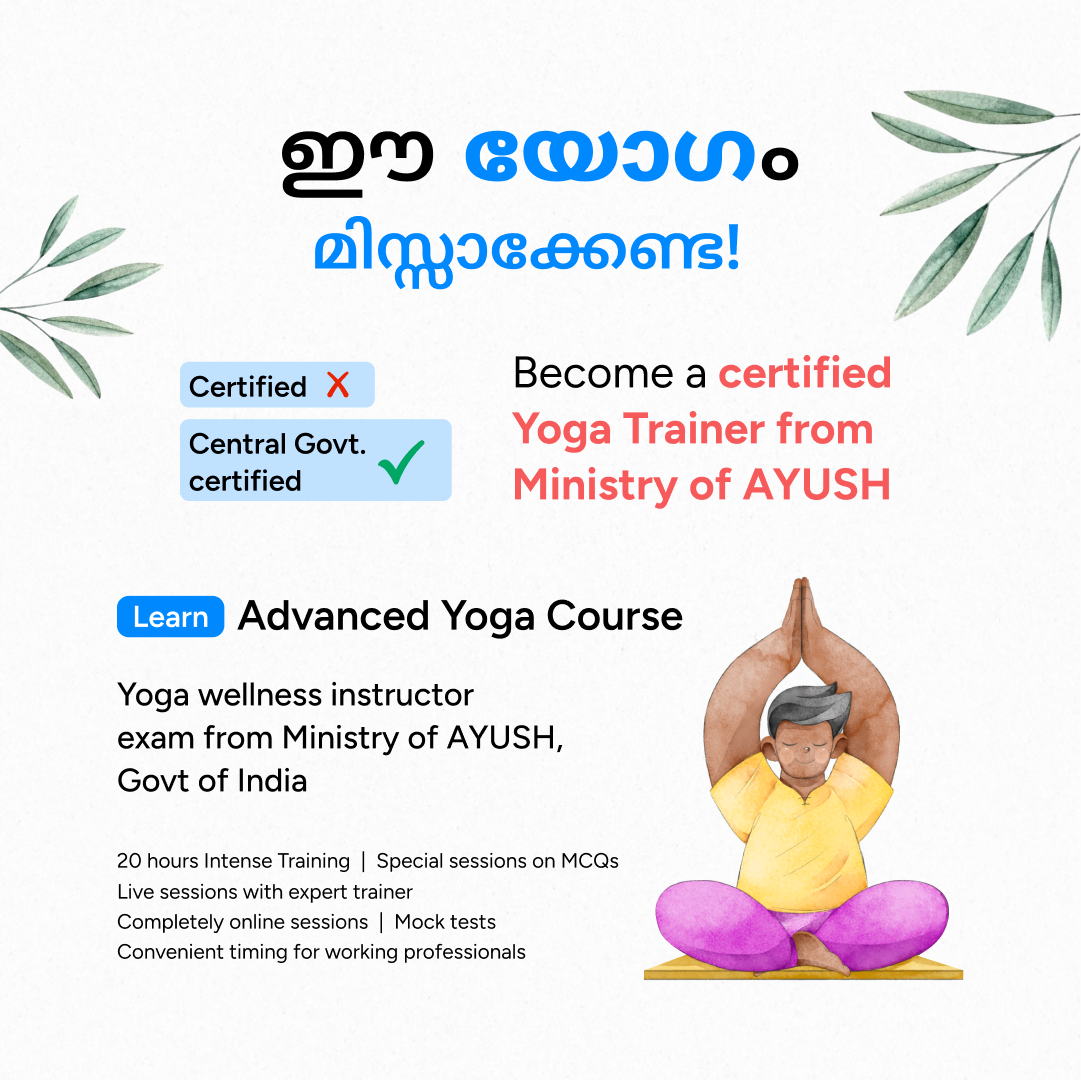Table of Contents
Apart from the technique that form the core content of yoga teacher training course we also need to understand the importance of yoga philosophy behind helping you understand the science of yoga. This understanding allows us to get acquainted with the right understanding of yoga with intelligence and gives us a much better perspective of what exactly we are doing. We can use this knowledge to modify our approach to yoga.
Understanding the philosophy behind yoga really helps us cultivate a level-headedness as it gives us an alternative way of thinking about our lives.
Discover the Art of Teaching Yoga – Join Our Teacher Training Program!
Purpose Of Yoga
Today, an understanding of science is rapidly changing the way we view ourselves and the world. The traditional materialistic conception of life as we know it is quickly vanishing with the discovery that matter and energy are essentially one. From Einstein’s relativity theory to the rise of quantum physics, it is common knowledge that every existing substance can be reduced to a pattern or form of energy, which interacts and interconnects with other forms. Some of today’s most celebrated physicists even go a step further, identifying consciousness as the fundamental ground of all being. Thus, modern science is now confirming the truest ancient principles of yoga practiced over 5,000 years, which affirm that unity pervades the entire Universe.
At its core, yoga is a way of life encompassing all aspects of our being- physical, emotional, mental, and spiritual. Through regular practice, we learn to observe our thoughts without judgment or attachment, which can lead to greater clarity in decision-making.
The ultimate goal of yoga is self-realization which means understanding who you are beyond your ego identity. This realization leads to profound transformation, where we let go of negative patterns that no longer serve us while embracing new positive habits rooted in love and kindness.
Physical Purpose Of Yoga
The physical purpose of yoga is often what draws people in initially, and with good reason – the benefits to our bodies are numerous. It’s not just about being able to touch your toes or contort into impressive positions. Yoga can also improve strength, particularly in areas like the core and upper body, where many tend to be weaker. Through holding challenging poses and flowing through sequences, we build lean muscle mass that helps protect joints and support overall health.
Mental Purpose Of Yoga
The mental purpose of yoga is to cultivate mindfulness, focus, and concentration through various practices such as meditation, pranayama (breathing exercises), and asanas (postures). These practices help us to calm down our busy minds and reduce stress levels which can lead to anxiety, depression, or other psychological disorders.
Practicing yoga regularly for its mental purposes can have numerous positive effects on one’s psyche, including reducing stress levels and symptoms related to PTSD while increasing mindfulness and focus, leading to a more fulfilling daily experience.
Emotional Purpose Of Yoga
Emotionally speaking, yoga can help us find inner peace and balance by regulating our emotions. By focusing on breathwork and mindful movement, yoga helps calm our nervous system, reducing anxiety and stress. Holding poses for extended periods teaches patience while also releasing tension from the body. This combination allows practitioners to develop a deeper self-awareness as they learn how to read their emotions.
By exploring the emotional aspect of Yoga, one begins on a journey towards discovering who they are authentic without all external layers stripping themselves down, only keeping what truly matters most – love.
Spiritual Purpose Of Yoga
The spiritual purpose of yoga is to help individuals connect with their inner selves and achieve a state of higher consciousness. This involves letting go of attachment to material possessions, focusing on one’s breath, and cultivating mindfulness. Through regular practice, Yogis can develop a deeper understanding of themselves and their place in the universe. They can learn to release negative emotions such as anger, greed, or jealousy and cultivate positive qualities like love, compassion, and gratitude.
The spiritual dimension of yoga allows practitioners to explore their faith or spirituality without being tied down by any specific religion or dogma. Yoga encourages self-reflection, which helps in discovering one’s true self.
Holistic Purpose Of Yoga
The holistic purpose of yoga also includes spiritual growth. Connecting with a higher power or source within ourselves, we understand who we are as individuals. We develop compassion towards ourselves and others and find inner peace amidst the chaos. The holistic aspect encourages us to view the world in a more interconnected manner; recognizing that everything is connected- people, animals, and nature alike- allows us to live harmoniously with one another while taking care of our planet at large.
Get Certified, Get Confident! Join Our Yoga Teacher Training Course!
Generally, for most of us, the ultimate goal of yoga is to be a better version of ourselves – to be healthier and happier. To achieve a new perspective on life and all that comes with it, to discover and embrace the true self and to appreciate every moment, and to live a happy, balanced and useful life. This would make a lot of sense to most of us as the word “yoga” itself means “to join or unite”, which implies joining or integrating all aspects of the individual body with mind and mind with soul.
In addition to all the health benefits that yoga brings, it is good to remember that the true purpose or goal of yoga is not just for use on the yoga mat. Everything you learn is meant to be put to the test, out there in real life, especially when things get stressful or messy whether at work, at home, in your personal life or with friends.
Importance Of Yoga Philosophy
1: Which of these is the primary goal of yoga practice?
The ultimate philosophy of yoga is about connecting the mind, body, and spirit. The purpose behind the philosophy of yoga is to get us out of this situation, and help us aim for a different goal called Equanimity.
The law of karma is central to the philosophy of yoga. Karma is the glue that attaches us to the wheel of samsara, which perpetuates our suffering and the delusion of Maya. Maya is the “illusion or ignorance” that creates the veil between our ego and our unitive experience of the universe.
Branches Of Yoga
There are six branches of yoga each represents a different set of characteristics. They are the following:
- Hatha yoga: This is the physical and mental branch that aims to prime the body and mind.
- Raja yoga: This branch involves meditation and strict adherence to a series of disciplinary steps known as the eight limbs of yoga.
- Karma yoga: This is a path of service that aims to create a future free from negativity and selfishness.
- Bhakti yoga: This aims to establish the path of devotion, a positive way to channel emotions and cultivate acceptance and tolerance.
- Jnana yoga: This branch of yoga is about wisdom, the path of the scholar, and developing the intellect through study.
- Tantra yoga: This is the pathway of ritual, ceremony, or consummation of a relationship.
Types Of Yoga
There are many types of yoga. A person should choose a style based on their goals and fitness level. The types of yoga are the following:
Ashtanga yoga – This type uses ancient yoga teachings.t became popular during the 1970s.
Bikram yoga – It is also known as hot yoga, in artificially heated rooms at a temperature of nearly 105oF and 40% humidity. It consists of 26 poses and a sequence of two breathing exercises.
Hatha yoga – This type generally serve as a gentle introduction to the basic poses of yoga.
Iyengar yoga – This type focuses on finding the correct alignment in each pose with the help of a range of props, such as blocks, blankets, straps, chairs, and bolsters.
Kripalu yoga – This type usually begin with breathing exercises and gentle stretches, followed by a series of individual poses and final relaxation.
Kundalini yoga – This type typically begins with chanting and ends with singing. In between, it features asana, pranayama, and meditation that aim to create a specific outcome.
Power yoga – This is an active and athletic type of yoga based on the traditional Ashtanga system which is practiced from late 1980’s
Vini yoga – This type focuses on form over function, breath and adaptation, repetition and holding, and the art and science of sequencing.
Yin yoga – This type focuses on holding passive poses for long periods of time. This style of yoga targets deep tissues, ligaments, joints, bones, and fascia.
Prenatal yoga – This type uses poses that practitioners have created with pregnant people in mind. This yoga style can help people get back into shape after giving birth, and support health during pregnancy.
Restorative yoga – It is relaxing method of yoga. It includes four or five simple poses, using props such as blankets and bolsters to sink into deep relaxation without exerting any effort when holding the pose.
Become a Certified Yoga Instructor
Yoga Teacher Training Course by Entri App: Master authentic yoga techniques, earn certification, and build a successful career as a professional yoga instructor.
Join Now!Benefits Of Yoga
As we all are aware of the benefits of yoga. Some of the both physical and mental benefits of yoga are given below:
- Building muscle strength
- Enhancing flexibility
- Promoting better breathing
- Supporting heart health
- Helping with treatment for addiction
- Reducing stress, anxiety, depression, and chronic pain
- Improving sleep
- Enhancing overall well-being and quality of life
Yoga Teacher Training – Learn from Experienced Instructors! Get Free Demo Here!
FAQ’S
Q: What is yoga philosophy?
Ans: Yoga philosophy is a philosophy of life. The basis of yogic philosophy is the Yoga Sutras by Patanjali. Written over 2000 years ago, the Yoga Sutras contain four ‘Padas’ or chapters brought from all paths of yoga and creating a comprehensive text. Within the sutras, Patanjali describes the Eight Limbs of Yoga, which must be practised and developed before true mental liberation is reached.
Q : Can yoga help certain medical conditions?
Ans: A regular practice can help improve the following conditions: Carpal Tunnel Syndrome, menopause, ADD (Attention Deficit Disorder), anxiety, depression, high blood pressure, migraines, insomnia, fused vertebrae, arthritis, chronic pain, scoliosis, sciatica, respiratory ailments, digestive disorders and diabetes. It benefits many other conditions also.
Q: How often should yoga be practised?
Ans: There is no minimum or maximum recommended time. A daily practise, however short, can be more effective that an intense weekly class. Dedicated yogis normally spend several hours a day.
Q: What is meditation?
Ans: Meditation is the result of sustained concentration. The desired purpose of each meditation technique is to channel our awareness into a more positive direction by totally transforming one’s state of mind. To meditate is to turn inwards, to concentrate on the inner self. Meditation calms the mind, brings emotional balance, mental clarity and focus.























